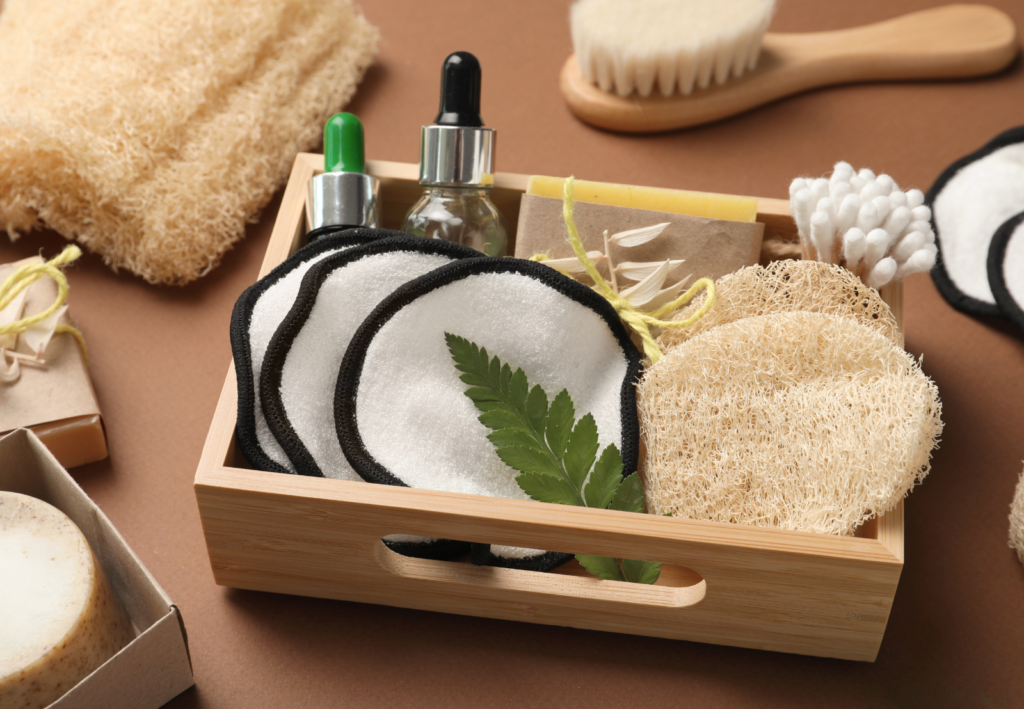Small changes, Big impacts: Transforming our daily lives with eco-friendly products.
Pragyan Rath
June 15, 2023. 4 minute Read
"
In this article, let’s invite everyone to join the sustainability movement to explore all the alternatives for the products used in daily life.
Let's Go!
I feel a sense of pride and purpose when I take a house tour in my own house. Everything at my place, be it my reusable water bottle, jute bags, aluminum vessels, steel glasses, or even my energy-saving LED light bulbs, I try to lead a sustainable and environmentally responsible lifestyle.
My conscious buying behavior didn’t happen overnight.
Like many others, I used to ignore how my daily decisions affected the environment. But I reached a turning point when I understood that even minor adjustments to our daily routines could significantly impact saving the earth.
Even what has changed is my quest to change my relationship with the things I use and look for environmentally friendly substitutes consistent with my principles.
What are eco-friendly products to you?
We hear phrases like “eco-friendly products” and “environmentally friendly” all the time, but do we grasp what they mean?
It’s crucial to comprehend the definition of the term “eco-friendly” to contribute to a greener planet and use sustainable items appropriately.
However, it now also denotes a different connotation, such as “earth,” “home,” and even “habitat.”
One must rephrase Eco-friendly as “earth-friendly” due to its varied connotations because being eco-friendly refers to creating products with little or no environmental impact.
So what we can do is when we buy things. We must make conscious decisions and must go through and must have a checklist while purchasing eco-friendly products. Some of them are listed below:
- Is it Renewable?
- Is it Non-Toxic and safe?
- Is the Product an Energy efficient product?
- Will this product help to reduce waste or even recycle or not?
- What is it with Carbon Footprint?
- Is the product Ethical or not?
Overall
Eco-friendliness involves more than just specific products; it also refers to a broader way of thinking and living that emphasizes responsible consumption, waste management, and environmental stewardship.
It entails making decisions that support a planet and future generations that are healthier and more sustainable.
Eco-Friendly Practices You May Use Everyday.
1. Rehearse the three Rs
Reduce consumption, reuse products where you can, and recycle things to help reduce trash production.
Several countries are known for their strong commitment to waste management and sustainability. Some examples include:
- Sweden: The country has implemented advanced recycling infrastructure and waste-to-energy plants, which help reduce landfill waste significantly.
- Germany: The country has achieved high recycling rates through efficient waste collection systems and promoting a recycling and resource conservation culture.
- Japan: The country promotes a comprehensive approach to waste management, focusing on waste separation, recycling, and innovative waste-to-energy technologies.
- Switzerland: The country has implemented strict waste management policies, extensive recycling infrastructure, and a "polluter pays" principle, encouraging responsible waste disposal and resource recovery.
- South Korea has implemented advanced recycling facilities and waste-to-energy plants, emphasizing waste reduction and efficient resource utilization.
Related Webstories : 10 Eco friendly Products used in Daily Lives
2. Go for Sustainable Beauty Products
As a conscious buyer, I focus more on natural skincare, making face packs with dried orange peels or rose petals, using sugar and coffee as scrubs, etc. Believe me; it works wonders.
But How Beauty and sustainability are related to each other?
2.1 Opt for multi-use products
With multipurpose products, you rely on one product, and when you buy that one, it releases less energy, less CO2, less fuel, and less waste. Many products work on this similar concept, such as
- Boroline is an Antiseptic and moisturizing cream many have had for the longest time.
- Similarly, coconut oil has a multipurpose use for hair, moisturizing cream, or even as a Cooking oil.
- Rose Water, again, can be used as a toner and hydrating solution for the skin.
Many products need to be marketed as multipurpose, but you may still get creative and find multiple uses of the same.
2.2 Find ways to make disposables reusables
Think about the items in your routine that you use once and then toss, like makeup wipes and cotton rounds. In many cases, there are reusable options you can use instead.
- You can use Charcoal facial bamboo pads, Makeup Remover Cloth Clean Towel, and Reusable Facial Cleansing Towel.
- You can even use the serum bottles or cream boxes to store other homemade diy products for self-care.
2.3 Use Biodegradable Products when you can
Certain things you use in your beauty routines—like cotton swabs, dental floss, and tissues—are inevitably going to wind up in the trash because they don’t exactly lend themselves to reusability (the idea of double-dipping on a snotty tissue or waxy Q-tip not so appealing). In these cases, opt for biodegradable options.
- You can use Bamboo Cotton Swabs and Wooden Cotton Buds, which are 100 percent cotton, no plastic, and are biodegradable.
- Instead of artificial makeup blenders, use Biodegradable Makeup Blenders for foundation and base coverage.
2.4 Use refillable Beauty Products
Thankfully, many companies have realized how detrimental single-use plastic packaging is and have begun to offer reusable alternatives.
- Applying ice to your face can have a glowy effect and reduce acne. But you can only hold an ice cube for a short time. So you can use Ice Roller for Face and Eye, Nykaa Naturals Ice Roller for De-puffing, and Face Toning Massage.
- Using Refillable Cream Foundation brands where give you the option to buy what you want versus buying the whole set or palette or whatever that's just going to end up going to waste.
2.5 Source products that come in aluminum, glass, or recycled plastic.
Only 9% of all plastic that has ever been produced worldwide has been recycled because plastic is challenging to recycle. Although virgin plastic (new plastic created from a petrochemical feedstock, such as natural gas or crude oil, that has never been used or processed) isn’t ideal, you can look for products manufactured from recycled plastic.
Related Webstories : 10 things that Prove that your Product is Eco-friendly or not?
3. Be a conscious Buyer and User to Conserve Energy.
As a conscious individual, one must switch to efficient products that conserve energy.
For example,
- In India, we are often delivered with raw milk. And usually end up leaving the pot boiling for minutes. Now, here is the thing; why not switch to burning that milk in a Microwave within a fixed timeline?
- Why switch-off lights when not in use?
- How about step-up and step-down switch points if you live in a tall building and suddenly you find water getting discharged as your tank is full? You save both water and electricity.
- When it comes to our toilets, many sanitarywares promise less discharge when you flush, take a bath, or even shower.
- Bollywood glamorized Bathtubs with filled water in them. But one must use bathtubs to make the surface wet and take a bath. Not only keeps your bathroom floor and minimizes the amount you use to wipe your wet feet.
All these are conscious choices that compound later when conserving energy.
3.1. Start a home garden.
Grow your edible herbs by planting seeds in pots or window sills. A small area can provide space for fruits and vegetables. Furthermore, you will get fresh and healthy grown fruits and vegetables.
Mint, coriander, and Curry leaves are where you start if you are starting your home garden.
3.2. Be innovative
Instead of disposing of old clothes in landfills, they can be utilized to produce cushion coverings or can even be used. As an alternative, you can choose to donate clothing to those in need.
There is a service from H&M where they take old clothes and get you complimentary discounts on a new product.
Doing this, you help the house become naturally warm while saving money on power.
3.3. Support your local community.
Eat local and support the local community. Avoid putting too much emphasis on your diet and strictly forbid food waste.
Busan in Busan City in South Korea has been focusing on a 15-minute city where they shop, relax, play, go to the gym, do regular checkups, and get all other standard stuff done in 15 minutes around their residential area. Keeping in mind pollution, traffic, etc.
3.4. Reduce meat consumption
Not good news for non-vegetarians like me, but do you know that by reducing meat consumption, you can make a significant impact on the environment?
Well, we all can save the world if we consume less meat. The earth’s surface is used for raising animals to a significant extent.
Widespread deforestation occurs solely to acquire land for our livestock grazing. As a result, fertilizers are used, and methane from cows is released into the atmosphere. When they are combined, greenhouse gas emissions result.
Similarly, raising animals adds to water pollution in rivers and streams.
3.5. Change your travel habits.
You can affect how others travel and drive by using ecologically beneficial methods in each situation.
To save on fuel, choose more direct routes, travel less, and select fuel-efficient modes of transportation. Try to take a bicycle if your office is close to your home rather than a car.
3.6. Educate others
Inform people about the value of living a sustainable lifestyle. The more individuals understand how important the environment is, the more we can do as a group to protect it.
How to Design a Sustainable Work Environment?
You must first understand how it got built to this point
We must extend eco-friendly practices beyond our homes and workplaces in our quest for a more sustainable future.
the average person spending a significant portion of their life at work, embracing environmentally conscious behaviors in the workplace becomes crucial.
By adopting eco-friendly practices in our professional lives, we can collectively reduce our ecological footprint and positively impact the planet.
From small businesses to large corporations, there are several steps we can take to promote sustainability and create a greener work environment.
Here is what you need to do:
1. Avoid using plastic cutlery
Buy metal or reusable cutlery and ditch single-use plastic.
2. Use eco-friendly cleaning products.
Both your house and office are affected by this. Numerous everyday cleaning supplies are indoor pollutants that endanger human health and the environment. Buy cleaning products that are safe for the environment and don’t contain poisonous or hazardous chemicals.
3. Create an office green team or group.
A green team or group at your workplace can create awareness in your office space. Great way to get more employees involved. It makes a sense of awareness.
4. Switch your search engine.
Did you realize that changing your search engine could have a positive environmental impact?
It’s simple and free to use new search engines like www.Ecosia.org, which plants trees for every search, and www.Blackle.com, which conserves energy.
5. Encourage taking public transportation, biking, and carpooling to work.
By making these choices, you cut pollution while saving money on gas and transportation expenditures.
6. Create Green Building Structures.
The technique of planning, constructing, and operating buildings in an ecologically responsible manner is called “green building,” sometimes known as “sustainable building.”
It involves ensuring the structure is energy-efficient and safe for its occupants and employing materials and construction techniques with minimal negative environmental impact.
7. Reduce waste
Green Buildings adopt waste disposal management through recycling. Also develops techniques to reuse materials that would otherwise be discarded. Additionally, because they consume fewer resources, there is less trash and landfill waste.
**An excellent place to start is simply by being more mindful and conscientious of your activities at work.**
Final Thoughts
Eco-friendly living is our responsibility to the earth we call home, not merely a fashion statement. By making sustainable choices, we can significantly reduce our carbon footprint and protect natural resources for future generations. Whether it’s choosing to use reusable bags, energy-saving appliances, or ethical and environmentally friendly brands, every little thing counts. We can build a greener, more sustainable future when we work together. Let’s embrace eco-friendly items as a deliberate decision, understanding that our combined efforts can promote a healthier and more peaceful coexistence of humans and the environment.
Subscribe to new post
The One Liner
Useful Links
Order Related Queries
Useful Links
Order Related Queries










